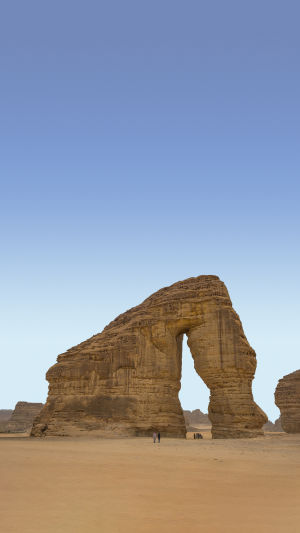Heimaey Island in southern Iceland is a magical elephant rock, even the rock texture is like the skin of an elephant.
In 1973, after the eruption of Eldfell volcano, the magma flowed into the sea and cooled and turned into basalt, which just formed this natural rock landscape, not only the eyes, ears, elephants, and stout limbs and elephants are vivid, but even the gray rough touch is also very vivid.
Hvitserkur is located in the northwest of Iceland, closer to the coastline. From Highway 1, after seeing Highway 711, turn and go all the way north, and you can find Elephant Stone Rock.
Be careful when driving in, don't turn to Highway 717, it seems that these two are just a lake apart, and will eventually meet. Highway 717 is very difficult to drive, much more difficult than 717, so be careful not to go wrong.
Elephant Stone Rock is not a very popular scenic spot, and it takes a long time to turn 717 from No. 1 Highway. In addition, Elephant Stone Rock stands on the sea, so to find the intersection, refer to Google MAP, and pay attention to the signs.
Once you find the parking lot, you have to walk forward for a while when you get off the car to reach the "Observation Deck". This section of the road is not long, and you can walk there in about 10 minutes.
When you walk to the viewing platform, you can see Xiangshiyan standing on the coast, but it doesn't look very beautiful. You can be careful and climb down slowly from the mountain road next to it.
Because it is a natural walking path, you really need to be careful if it is raining, windy or snowing in bad weather.
Walking down the sidewalk, you will see Elephant Stone Rock in front of you.
On the roadside of the 134 national roads in Castella, Sardinia, Italy, there is also a stone that resembles an elephant, and this stone has become a local symbol.
This "elephant rock" is part of the Monte Casteddazzu rock, which fell to the side of the road after it broke off the mountain. Over time, the trachyte gradually "grows out" an elephant-like trunk. There are also two Domus de Janas (a kind of burial chamber) inside this rock, so it also has important archaeological value.
Student Giulia Lupino took this photo of the "elephant stone". The first time he saw the "elephant stone" from a distance, he thought it was very small, but when he got closer, he found that the "elephant" was more than 4 meters high.
This "elephant stone" in Italy isn't the only one created by nature. On the shore of Heimaey, the largest in the Vestmannaeyjar, there is also a piece of basalt that has been shaped by the sea into the shape of an elephant.
This Elephant Stone is located on the roadside of the 134 national roads in Castella and has become a symbol of the town.





